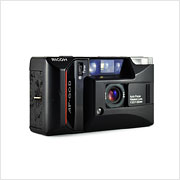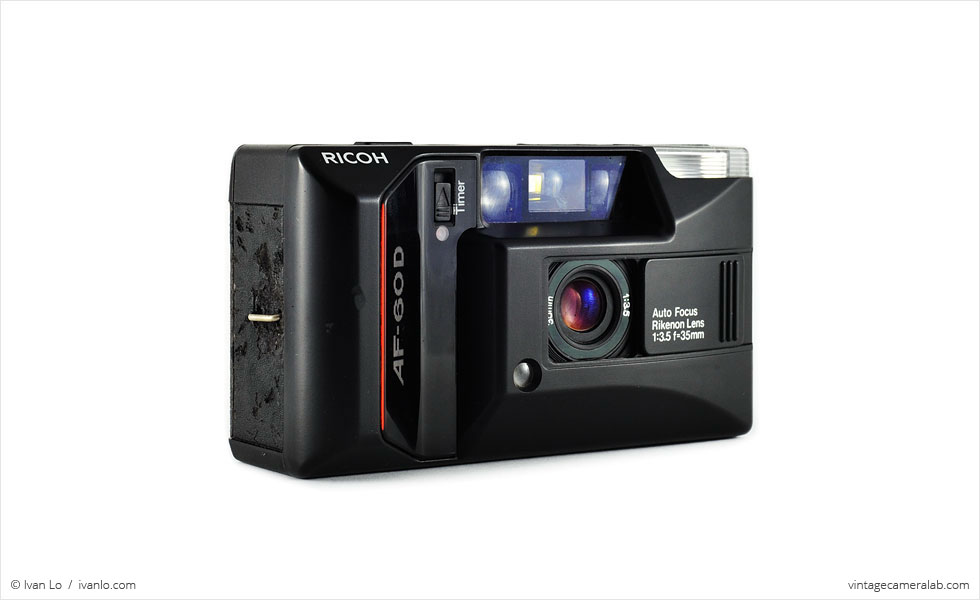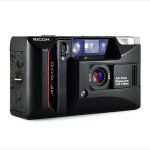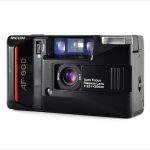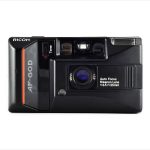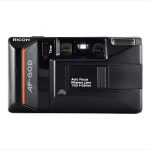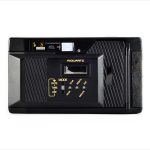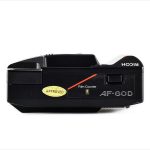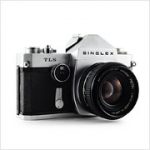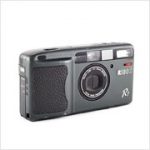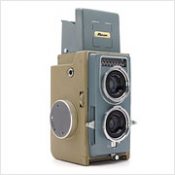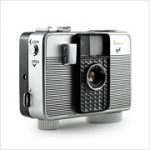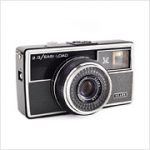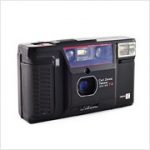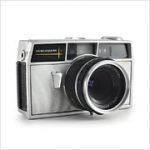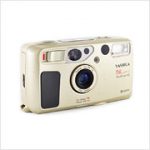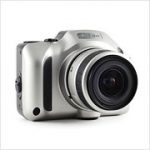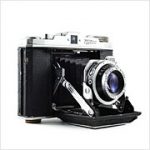Ricoh AF-60D Specifications
| Manufacturer: | Ricoh Company, Ltd. |
| Origin: | Japan |
| Made in: | Taiwan |
| Introduced: | 1986 |
| Type: | Viewfinder |
| Format: | 135 Film |
| Dimensions: | 11.7 x 6.5 x 5 cm |
Ricoh AF-60D Overview
The Ricoh AF-60D is the data back equipped variant of the AF-60, one of half a dozen or so consumer grade autofocus point-and-shoot cameras introduced by Ricoh in the mid to late 1980s. This particular AF-60D—which was purchased by my father when I was a kid—has the distinction of being the first camera I have ever used. I remember going into my parents’ bedroom and digging the Ricoh out of my dad’s sock drawer. I remember looking through its viewfinder at the mirror and putting my finger on the shutter button like I had seen my dad do so many times. A click and whirr later, I ran away giggling.
The AF-60D is far from the best camera in the world but as our family’s “fool’s camera” (Chinese slang for “point-and-shoot”) growing up, it definitely did the job. Sliding back the cover on the front of the camera reveals a 35mm f/3.5 Rikenon lens paired to an electronically controlled shutter. The self-timer is activated by the switch on the front next to the grip and the flash pops up when needed. Those ubiquitous ’80s/’90s timestamps can be set using the ridiculously small buttons on the data back.
It’s got a few scratches and dents, scuffed up leatherette, and a cracked LCD screen on the data back but besides that, this camera is in fairly good cosmetic condition. However, I’m disappointed to find that the AF-60D no longer turns on, even with clean contacts and fresh batteries. As it’s been ages since I’ve last seen it used, I’m not sure how long it’s been inoperable but I wouldn’t be surprised if it’s been that way for years. Regardless, I’m thankful for its existence and it will always have a special place in my collection.
Find your very own Ricoh AF-60D on eBay.
“Ricoh AF-60,” Camera Wiki, http://camera-wiki.org/wiki/Ricoh_AF-60
